This is a past event. Registration is closed. View other South African Association for Food Science &Technology (SAAFoST) events.
Event Details
The workshop will cover a selection of Sensory and Consumer Evaluation topics. Hands-on practical activities will be used to empower persons working in application technology, product development, quality control and R&D in the food industry with skills to perform a range of sensory evaluation tasks.
Jun 11 & 12, 2024 GMT+2
Add to CalendarFuture Africa Campus, University of Pretoria
South Street
Pretoria, Gauteng, South Africa
Show on map
Agenda
- Day 1 (June 11, 2024)
- 08:00 - 09:00Registration Tea/CoffeeEveryone checks in at the event and has morning coffee.
- 09:00 - 09:10WelcomeWelcome and official opening of the workshop

Riëtte de Kock
Professor at Department of Consumer and Food Sciences, University of Pretoria
- 09:10 - 11:00Sensory Consumer InsightsSensory evaluations are increasingly designed to gather in-depth consumer insights beyond acceptance data. This involves understanding the underlying reasons behind consumer preferences, identifying the key sensory attributes that drive liking or disliking, and assessing the impact of product attributes on consumers’ behaviour and purchasing habits. Learning more about the value of sensory consumer insights will help participants to create products that resonate with consumers, exceed expectations, and drive business growth.
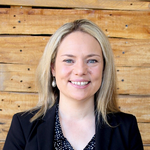
Annchen Mielmann
Associate Professor at North-West University
- 11:00 - 11:30Refreshment breakTime to refresh and have some coffee
- 11:30 - 13:00Getting more out of the Check-All-That-Apply methodology with consumersProduct success in the marketplace depends on consumers liking a product and coming back to purchase it again. Therefore, it is very important that sensory and consumer researchers focus their insights on both the sensory and hedonic liking of a product. A large collection of sensory tests exists for probing consumer liking and perception. Consumer tests can be quantitative or qualitative of nature. All these consumer-focussed tests have different objectives and as such the approach for sound actionable results are also distinct. In a world where time is money, shorter and easier ways are always looked for and in 2007 the Check-All-That-Apply methodology came onto the scene, as a rapid method, that could be used to profile products faster and easier. However, we will explore the use of this method with consumers to identify crucial attributes.
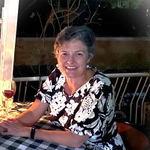
Lorraine Smuts
Market researcher at Consumers In Focus
- 13:00 - 14:00LunchEveryone to have a quick and filling lunch
- 14:00 - 16:00Should newly-developed food products only be JAR or should they be ‘JAF’ or even ‘JAP’?In the development of new products, it is common practice to use 'just-about-right' (JAR) scales, to indicate the readiness of launching the new product into the market. Different sensory attributes may be rated on a 5-point scale, including taste, aroma, mouthfeel, appearance, etc. The five sections on the scale include: ‘much too weak’; ‘somewhat too weak’; ‘just-about-right”; ‘somewhat too strong’ and ‘much too strong’.
This is a consumer test and when 75% of the panel indicates JAR for a specific attribute, no changes are needed for that attribute. This presentation will lead the attendees through the whole process of developing a new product, presenting it to the consumer to rate on the JAR scale, the different statistical analysis involved, how to interpret the statistical results and how to decide which changes should be made, to reach the magical percentage of 75, for all the attributes. The question will then be addressed if 75% JAR is good enough to send a product into the market. Shouldn’t a food product be ‘just-about-fantastic' (JAF) or even ‘just-about-perfect' (JAP)?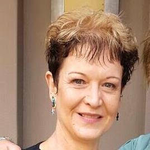
Carina Bothma
Lecturer at University of the Free State
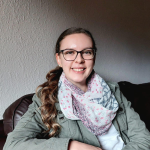
Almaré de Bruin
Post Graduate student at University of the Free State
- Day 2 (June 12, 2024)
- 08:30 - 09:00Arrival and CoffeeEveryone has some coffee or tea before the second day of the workshop commences.
- 09:00 - 11:00Development of sensory lexicons and sensory wheelsHow do you get technical, marketing and sales divisions within your company on the same sensory page? The different divisions need to speak the same sensory language! Communication tools such as sensory lexicons and sensory wheels provide standardised and descriptive vocabularies that allow the sensory scientist to relate the sensory properties of a specific product or commodity accurately and objectively to technical and non-technical business audiences, and ultimately the consumer. Delegates will have the opportunity to discover more about the development of sensory tools and experience the application to indigenous herbal teas.
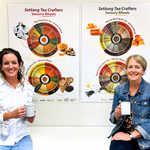
Erika Moelich & Brigitte du Preez
Researchers at Stellenbosch University
- 11:00 - 11:30RefreshmentQuick leg stretch and coffee/tea
- 11:30 - 13:00Uncovering Consumer Insights through Qualitative MethodsWe've all heard of focus groups. But there is a lot more to their success and the insights they produce than meets the eye. In this session, we will dive deep into these factors to help you understand the dos and don'ts when planning your focus groups. Participants will learn how to craft effective questions and pick up on those subtle cues to understand what consumers need. We will also explore the integration of cutting-edge AI tools in qualitative analysis, helping us dig even deeper into consumer data for those golden insights.

Jeanine Kriek
Associate Director - Sensory Qual of MMR
- 13:00 - 14:00LunchEveryone will have some lunch
- 14:00 - 16:00How to screen company employees for sensory evaluation tasksFood companies rely on their employees for various sensory evaluation tasks as part of product development and quality control. It is important that these evaluators are screened to ensure reliable results that can be used for decision-making. Easy to assemble, convenient screening tools are needed for the tasks. Participants will have a chance to experience and learn to prepare some practical tools that can be used for the purpose.
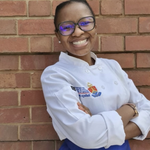
Katlego Mahlako Kgole
Research Assistant at University of Pretoria

Riëtte de Kock
Professor at Department of Consumer and Food Sciences, University of Pretoria
- 16:00 - 16:15Summary and ConclusionConcluding the workshop.

Riëtte de Kock
Professor at Department of Consumer and Food Sciences, University of Pretoria
Speakers

Carina Bothma
Lecturer at University of the Free State
Read Bio
Katlego Mahlako Kgole
Research Assistant at University of Pretoria
Read Bio
Jeanine Kriek
Associate Director - Sensory Qual of MMR
Read Bio
Annchen Mielmann
Associate Professor at North-West University
Read Bio
Erika Moelich & Brigitte du Preez
Researchers at Stellenbosch University
Read Bio
Lorraine Smuts
Market researcher at Consumers In Focus
Read Bio
Almaré de Bruin
Post Graduate student at University of the Free State
Read Bio
Riëtte de Kock
Professor at Department of Consumer and Food Sciences, University of Pretoria
Read Bio
Community
Connect with 49 people attending this event


 KHNSTBIB
KHNSTBIBTickets
- SAAFoST Expert Sensory workshop
Ticket for SAAFoST members
- Member Price R 4,500
- SAAFoST Expert Sensory Workshop (Sold Out)
Ticket for non-members of SAAFoST
- R 6,500
- Ticket for SAAFoST company members' employees
Non-members of SAAFoST, but employees from SAAFoST Institutional and Custodian company members, may register here.
- R 4,500
